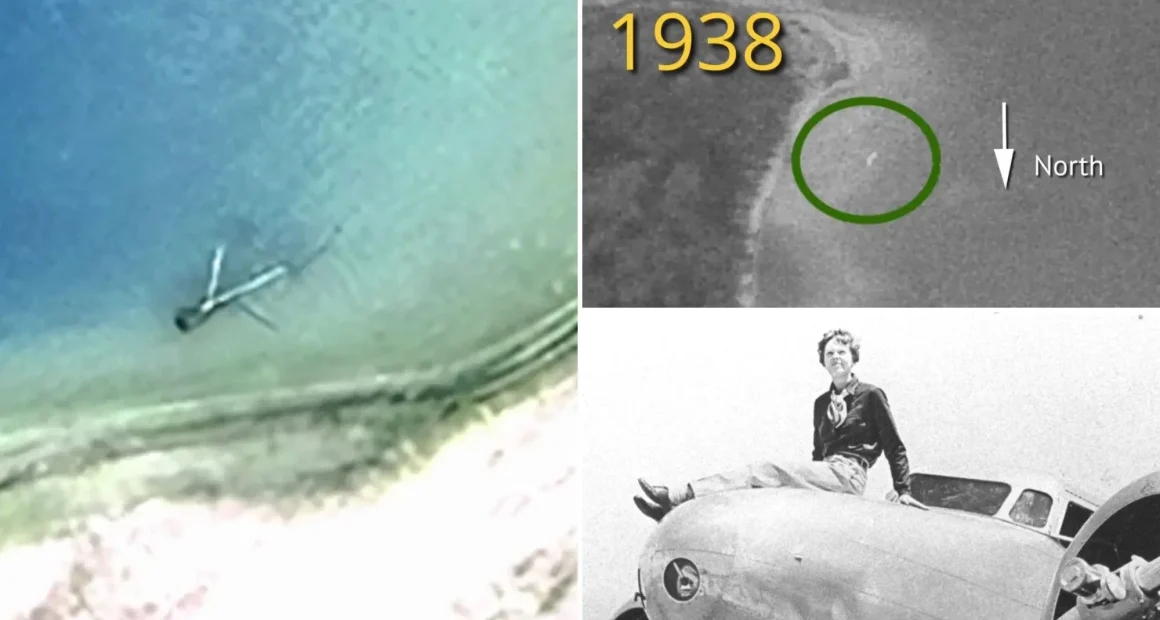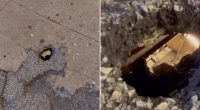New 1938 Aerial Photos Offer “Very Strong” Evidence of Amelia Earhart’s Missing Plane, Researchers Say
Researchers claim that newly discovered aerial photos taken in 1938 reveal a mysterious anomaly on a remote South Pacific island, providing “very strong” evidence that it could be Amelia Earhart’s long-lost plane.
The footage shows a strange metallic object submerged in a lagoon on Nikumaroro Island — captured just a year after Earhart disappeared 88 years ago. Scientists believe the so-called “Taraia Object” may be the Lockheed 10-E Electra she famously flew, according to Purdue University.
A 15-person team, including researchers from Purdue and the Archeological Legacy Institute (ALI), will travel to Nikumaroro on November 4 to investigate the discovery, which is thought to include the main body and tail of Earhart’s missing aircraft.
1938 Aerial Photo Reveals Anomaly on Nikumaroro Island, Boosting Hunt for Amelia Earhart’s Plane
Aerial photos from 1938 reveal a mysterious anomaly in the lagoon of Nikumaroro Island, fueling hopes that it could be Amelia Earhart’s missing aircraft.
“Finding Amelia Earhart’s aircraft would be the discovery of a lifetime,” said ALI executive director Dr. Richard Pettigrew, who has long believed Nikumaroro holds the key to her disappearance.
“Other evidence already collected by the International Group of Historic Aircraft Recovery establishes an extremely persuasive, multifaceted case that the final destination for Earhart and her navigator, Fred Noonan, was on Nikumaroro. Confirming the plane wreckage there would be the smoking-gun proof.”
The three-week expedition will focus on the “Taraia Object,” a mysterious shape first spotted in 2015 satellite images on the north shore of the Nikumaroro lagoon. The 15-person team — including researchers from Purdue University and the Archeological Legacy Institute (ALI) — is scheduled to return on November 21.
Pettigrew believes he has identified the main body and tail of Earhart’s missing aircraft.
“A successful identification would be the first step toward fulfilling Amelia’s original plan to return the Electra to West Lafayette after her historic flight,” said Steve Schultz, senior vice president and general counsel at Purdue University, referring to the Indiana city where the school is located.
“Additional work would still be needed to accomplish that objective, but we feel we owe it to her legacy, which remains so strong at Purdue, to try to find a way to bring it home.”
Earhart, who began working at Purdue in 1935, disappeared with her navigator, Fred Noonan, on July 2, 1937, during her historic, ill-fated attempt to circumnavigate the globe.
Richard Pettigrew, Sirisha Bandla, and members of the Amelia Earhart expedition team posed with a statue of Earhart and a replica of her Lockheed Electra 10E aircraft.
Earhart and her navigator, Fred Noonan, had set off from Lae, Papua New Guinea, intending to refuel on Howland Island before continuing to Honolulu and their final destination in Oakland, California. However, they encountered strong headwinds near Lae, and Earhart’s radio transmissions soon went silent.
The U.S. Navy and Coast Guard launched a 16-day search for the missing pair but found no trace. Earhart was officially declared dead on January 5, 1939.
Earhart disappeared with navigator Fred Noonan in 1937 during what was intended to be a record-setting flight around the world.
Despite numerous attempts and millions of dollars spent over nine decades, neither Earhart’s remains nor the wreckage of her plane have ever been found. The latest multimillion-dollar effort, led by South Carolina-based deep-sea explorer Tony Romero and his Deep Sea Vision team, came up empty last year. Romero had captured a sonar image of an aircraft-shaped object in the Pacific Ocean, initially believed to be Earhart’s plane, which was later confirmed to be a rock formation.










